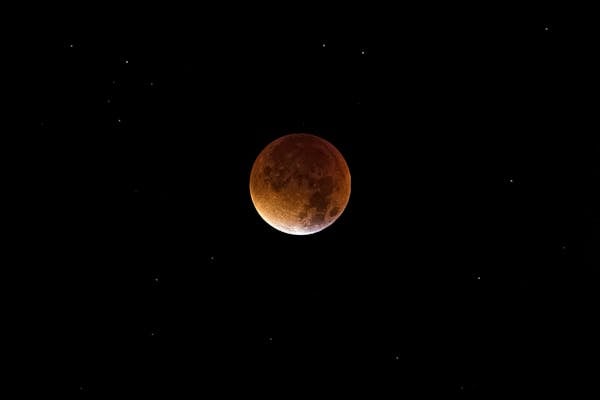Total Solar Eclipse of April 8, 2024 Over Mexico, the USA, and Canada

Mark your calendars and prepare your telescopes for one of the most spectacular astronomical events of the decade: the total solar eclipse of April 8, 2024 over Mexico, the USA, and Canada. This rare celestial phenomenon promises to be a breathtaking spectacle, attracting skywatchers from around the globe. Here’s everything you need to know about this upcoming event.
What is a Total Solar Eclipse?
A total solar eclipse occurs when the moon passes directly between the Earth and the sun, completely obscuring the sun’s light for a brief period. During this event, day turns into night, and the sun’s corona, or outer atmosphere, becomes visible, creating a stunning halo effect. This extraordinary occurrence is both a visual and scientific marvel, offering a unique opportunity to study the sun’s corona.
Path of Totality
The total solar eclipse of April 8, 2024 over Mexico, the USA, and Canada will follow a specific path known as the path of totality. This narrow band, approximately 100 miles wide, is where the total eclipse can be observed in all its glory. Outside of this path, observers will only witness a partial eclipse.
Mexico
The path of totality will first touch land in Mexico. Cities such as Mazatlán, Durango, and Torreón will experience the total eclipse, with the duration of totality lasting up to four minutes. The eclipse will occur in the early afternoon, providing optimal viewing conditions with the sun high in the sky.
USA
As the eclipse moves north, it will cross into the United States, offering millions of Americans the chance to witness this rare event. Major cities in the path of totality include Dallas, Texas; Little Rock, Arkansas; Indianapolis, Indiana; and Cleveland, Ohio. The eclipse will occur during the afternoon hours, making it a prime time for viewing parties and educational events.
Canada
The eclipse will continue its journey into Canada, where cities such as Niagara Falls, Ontario; Montreal, Quebec; and St. John’s, Newfoundland will experience totality. In Canada, the eclipse will occur in the late afternoon, providing a stunning end to the day as the sun sets in a blaze of glory.
Viewing Tips and Safety
Viewing a solar eclipse is an awe-inspiring experience, but it must be done safely. Looking directly at the sun without proper eye protection can cause severe and permanent damage to your eyesight. Here are some essential tips for safely observing the total solar eclipse of April 8, 2024 over Mexico, the USA, and Canada:
- Use Solar Viewing Glasses: Specially designed solar viewing glasses or eclipse glasses are a must. These glasses are equipped with filters that block harmful solar radiation, allowing you to view the eclipse safely.
- Pinhole Projector: A pinhole projector is a simple and safe way to watch the eclipse indirectly. By projecting the sun’s image onto a surface, you can observe the eclipse without looking directly at the sun.
- Telescopes and Binoculars with Solar Filters: If you plan to use a telescope or binoculars, ensure they are equipped with proper solar filters. These filters are designed to protect your eyes and the equipment from the intense solar radiation.
Timing and Duration
The total solar eclipse of April 8, 2024 over Mexico, the USA, and Canada will vary in timing and duration depending on your location within the path of totality. On average, the total phase of the eclipse will last around four minutes, but this can vary slightly. The entire event, from the beginning of the partial eclipse to the end, will span several hours.
Eclipse Stages
- First Contact: This marks the beginning of the partial eclipse when the moon starts to move in front of the sun.
- Second Contact: The start of the total eclipse, where the sun is completely covered by the moon.
- Totality: The brief period during which the sun is entirely obscured, and the corona is visible.
- Third Contact: The end of the total eclipse, as the moon begins to move away from the sun.
- Fourth Contact: The conclusion of the partial eclipse, with the moon no longer covering the sun.
Cultural and Scientific Significance
Eclipses have long been a source of wonder and reverence across cultures and civilizations. Historically, they were often seen as omens or supernatural events. Today, they provide invaluable opportunities for scientific study. The total solar eclipse of April 8, 2024 over Mexico, the USA, and Canada will be no different, offering astronomers a chance to study the sun’s corona, solar flares, and other phenomena in detail.
Educational and Community Events
Many communities along the path of totality are planning special events to celebrate the eclipse. Schools, planetariums, and astronomy clubs will host viewing parties, educational programs, and workshops. These events are an excellent opportunity for people of all ages to learn more about astronomy and the science behind eclipses.
Conclusion
The total solar eclipse of April 8, 2024 over Mexico, the USA, and Canada is an event not to be missed. Whether you’re a seasoned astronomer or a curious observer, this celestial spectacle promises to be a memorable experience. Make sure to prepare in advance, ensure you have the right viewing equipment, and find a spot within the path of totality to enjoy this once-in-a-lifetime event.
As the day approaches, keep an eye on weather forecasts to ensure clear skies for optimal viewing. Join the millions of people who will witness this awe-inspiring event and marvel at the wonders of our universe. The total solar eclipse of April 8, 2024 over Mexico, the USA, and Canada will undoubtedly be a highlight of the year, bringing together people from all walks of life to share in the beauty and mystery of the cosmos.
